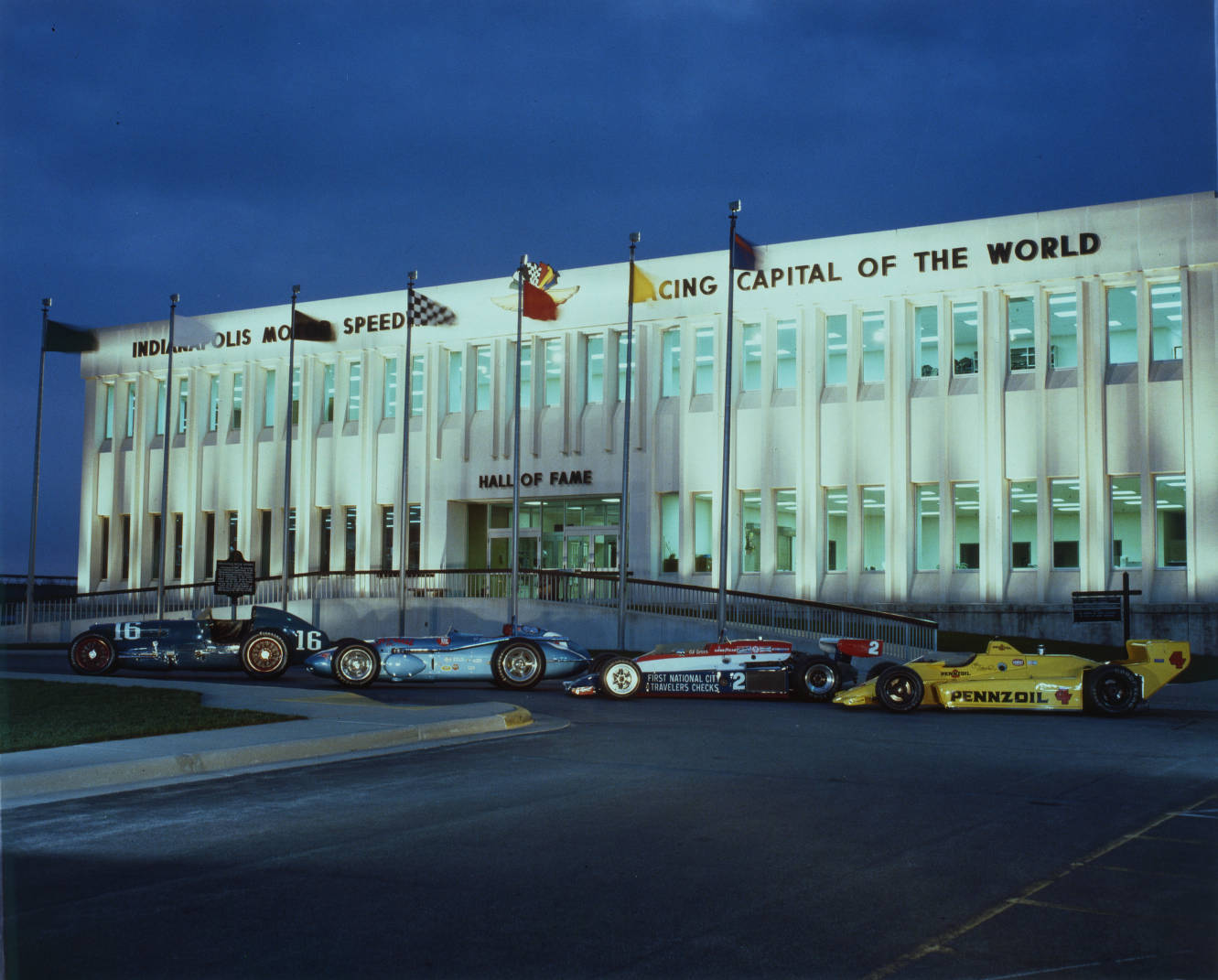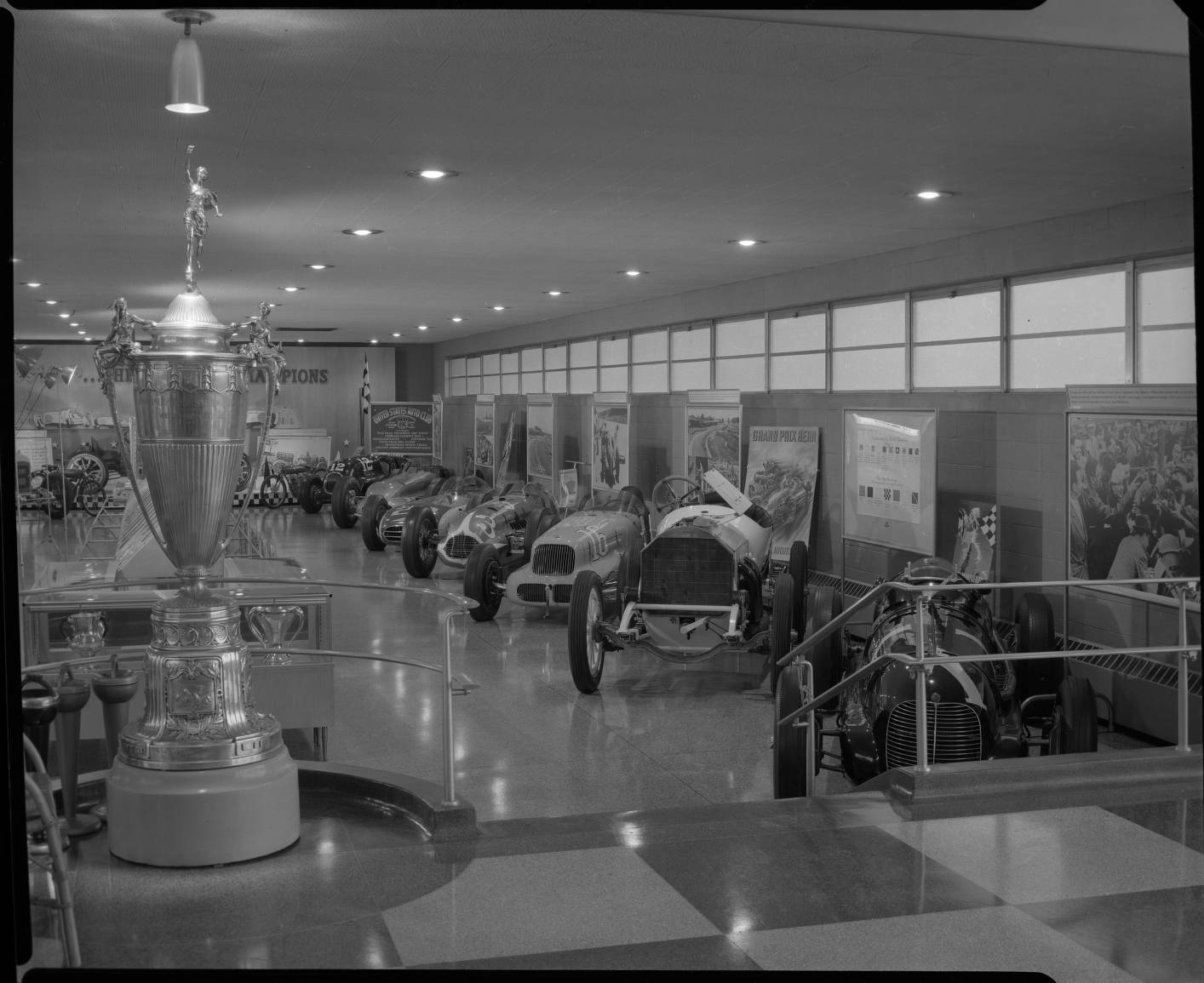The Indianapolis Motor Speedway Hall of Fame Museum was established in 1956 by the late , then track owner, and Karl Kizer, first museum director, to house the Hall of Fame, created in 1952 to honor outstanding personalities in racing and the auto industry. The museum was located outside Gate 1 and displayed a few vintage racing cars.

A larger museum was built within the Speedway oval in 1975. This 96,000-square-foot building houses the museum, administrative offices, Speedway ticket office, and Speedway gift shop. The Louis Chevrolet Memorial, located adjacent to the museum, exhibits a bronze bust of Chevrolet and highlights his automotive accomplishments.
The displays are regularly rotated in the museum, exhibiting approximately 70 of the cars included in the collection of more than 200 vehicles. In addition to winning cars from the , the museum displays vintage passenger cars. Inductee medals and portraits are displayed in the museum, which also includes tapes and films to be used for researching cars and drivers’ careers.

One of the most noted exhibits is the car that won the 1911 race, a Wasp driven by . Another popular exhibit features the four cars driven by A. J. Foyt the four times he won the race (1961, 1964, 1967, 1977).
The museum includes a collection of trophies, uniforms, goggles, and other race-related items, documenting the changing styles and safety standards throughout the years since the race’s beginning. One of the most notable trophies is the Wheeler-Schebler trophy created by Tiffany.
An exhibit of the timing and scoring methods is a recent addition to the museum. The Tony Hulman Theatre provides visitors with a look at historic footage from the first race in 1911, private footage of the track in 1945 when it was purchased by Hulman, and highlights from many races.

Help improve this entry
Contribute information, offer corrections, suggest images.
You can also recommend new entries related to this topic.